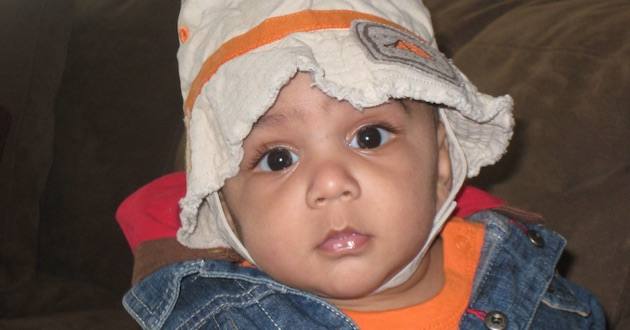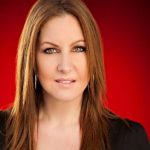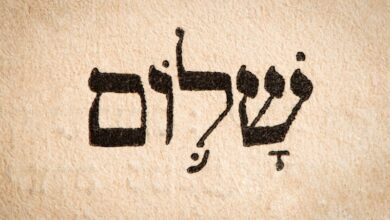‘He found us:’ TV host shares her long journey to have children

I always knew I would adopt. As a kid I watched “The Josephine Baker Story” on television and the fact that she adopted 12 children made a big impression on me. It was then, as just a child myself, that I decided I would someday adopt a child.
But somewhere along the way I forgot about that decision.
Years after my husband and I got married, since we had put our careers first, I finally asked him, “Are we ever going to have children?!” The very next day we started trying.
I got pregnant right away and miscarried soon after. Although I was devastated, I knew the odds of a woman having a miscarriage – 15 percent if you’re under 35, higher if you’re older.

I wasn’t discouraged. After all, I had gotten pregnant very quickly, and I come from women who had children when they were older. My grandmother had my uncle at 43 and my great-grandmother had my aunt at 51!
Getting pregnant a second time happened fast too, just a few months later. My doctor recommended I get bloodwork done because my father is Jewish and there are a number of genetic Jewish diseases that are carried among Ashkenazi Jews.
When the bloodwork came back, it was confirmed that I was a carrier of Canavan – a neurological disease very similar to Tay-Sachs disease. The doctor also informed me that my baby most likely would not have this horrific disease because my husband is not of Ashkenazi ancestry. He is of Indian-Turkish ancestry.
Months later during my ultrasound, the doctor saw something he didn’t like. He recommended that I have amniocentesis to either rule out or confirm what he suspected. I was hesitant. I was more than eight months pregnant at the time, and I knew this procedure could increase the chance of a miscarriage. But the doctor insisted.
SEE OUR SPECIAL GUIDE FOR NOVEMBER: NATIONAL ADOPTION MONTH
Sadly, his suspicion was right. The baby did have Canavan. After much genetic testing and various labs working with our DNA, it was found that I carried the Ashkenazi Jewish mutation and my husband carried the Turkish mutation.
The baby died four days before I delivered her.
What followed was years of failed in vitro fertilization (IVF) attempts with preimplantation genetic diagnosis (PGD). Eleven embryos were created – 100 percent of them had Canavan.
It was my brother who reminded me of my childhood dream. He said, “Leslie, don’t you remember, you always wanted to adopt one child and have one child?” Yes, I remembered.
I told my husband of my childhood dream to adopt and he was in agreement. But he had two requests: that the child look like him and that we adopt a little boy, a son. Now that might not sound like a tall order, but my husband is Indian, and the adoption agency quickly told me that I most likely would have to adopt from India because they had never experienced an Indian child being put up for adoption in the United States!
So we started our journey. We did all the paperwork, met with the social workers, had our fingerprints taken, background checks, physical exams, personal recommendations, etc., all to make our dream come true.
We went to India and visited orphanages in Andhra Pradesh, only to be told after traveling thousands of miles that there was a moratorium on adoption in that section of India. So then we traveled to Delhi, where we hired an adoption lawyer who ran off with our money and without helping us.
In Pune, we went to a Catholic orphanage. There was a room with over 20 babies – all male with the exception of one little girl. I looked at each of them and I told the nun, I don’t feel anything, how do I decide? She told me something I will never forget: “When you adopt a baby, you don’t find them, they find you.”
There were other obstacles to adopting from India as well. My husband was not born there, nor was I, and neither one of us is Hindu. That put us at the very bottom of the list. We were told it could take years to be able to adopt a baby; maybe it would never happen at all.
My husband and I went home empty handed and broken hearted.
Then one day, as we were thinking about where else babies might resemble my husband, I thought of Pakistan. My husband had volunteered with a humanitarian medical group a few years prior when Pakistan experienced an earthquake.
So I sat down at the computer and Googled “Americans adopting from Pakistan.” The word IMPOSSIBLE literally popped up on my screen. And I thought, nothing’s impossible!
After living in Pakistan for four months, we finally were able to bring our little boy home. That was 11 years ago and I can honestly say, he found us, and I am so, so glad he did.
After finding couples that had adopted from Pakistan through Yahoo groups, we embarked on yet another journey to become parents.
There is an organization called the Edhi Foundation. The Edhis are a very philanthropic family who are much like the Red Cross in Pakistan. Back then they had 19 orphanages (now there are more) where they encourage people not to throw away or kill their babies. Even now in 2018, hundreds of babies are found in the trash and dumpsters throughout Pakistan each year.
We filled out the paperwork and waited, and waited, and waited.
Then, while in London, we found out that Mrs. Edhi had an office there and was in town at the same time that we were. My husband and I stood in the rain outside of her office, yelling her name. Finally, she agreed to meet with us.
We pleaded our case to her and told her why we would make good parents. We asked her to consider us and to hopefully move our names from the bottom of the pile to the top. We also told her of my husband’s desire for a little boy, a son. She laughed. “Don’t you know this is a patriarchal society here? No one ever gives up little boys!”
I left feeling more discouraged.
Exactly three weeks after we met with Mrs. Edhi, on our 11th wedding anniversary, we received a phone call and were told: Your son was just born.
The things we had to go through in order to get our baby boy and bring him home could rival a Jason Bourne novel. But in brief: we got emergency Visas from the Pakistani consulate; flew 8,347 miles from Los Angeles to Karachi, Pakistan; met with military generals; emailed the president; waited outside a courthouse where terrorists were shooting judges; and couldn’t leave the country because politician Benazir Bhutto had been assassinated.
After living in Pakistan for four months, we finally were able to bring our little boy home. That was 11 years ago and I can honestly say, he found us, and I am so, so glad he did.
One last thing. We had one very fragile embryo still on ice. After a probe, we learned that it did not have the disease we carry. We went through IVF round number 13. And our little girl was born.







